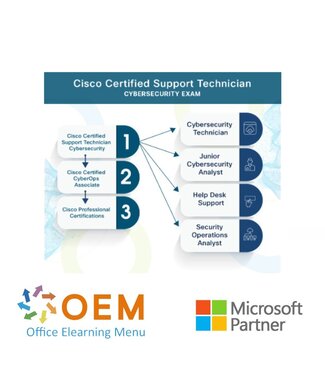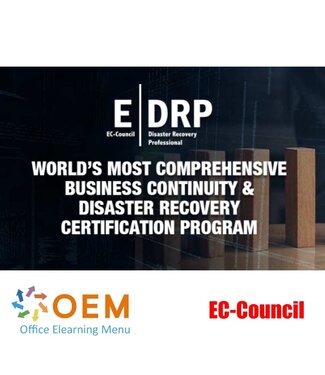Cisco, the worldwide leader in technology that powers the Internet, has partnered with Certiport to create the Cisco Certified Support Technician (CCST) certification program.
This program includes three certification exams designed to validate work-ready skills and knowledge to help learners find a job in the field of end user support, networking, and cybersecurity. Earning a Cisco Certified Support Technician certification showcases the learner’s skillset to employers, telling them they are ready to roll up their sleeves on day one.
The CCST IT Support, CCST Networking, and CCST Cybersecurity exams were created by a team of subject-matter experts from diverse careers and industries (including Cisco employees, networking and cybersecurity professionals, hiring managers, professors, teachers, and the experts at Certiport) to ensure these certifications effectively bridge the gap between education and the skills and knowledge needed to succeed in the workplace. It helps prepare learners for high-demand roles in tech support, networking, and cybersecurity, including analysts, auditors, support specialists, and technicians.
Learners that earn the Cisco Certified Support Technician certifications are expected to have the required knowledge and work-ready skills necessary to launch a career in IT support, networking, and cybersecurity, through at least 150 hours of instruction. The Cisco Certified Support Technician program comprises these certifications: Cisco Certified Support Technician IT Support, Cisco Certified Support Technician Networking and Cisco Certified Support Technician Cybersecurity.
The successful candidate has the foundational knowledge and skills necessary to demonstrate cybersecurity skills. This test will be an entry point into the Cisco Certified program. The next certification in this pathway is the Cisco Certified CyberOps Associate.
Candidates for this exam are starting their journey in the cybersecurity field. This exam assesses their understanding of key security paradigms, terminology, and mindset. Successful candidates will have a keen awareness of the importance of security and the threats to a business when security procedures are not followed. They are willing to teach others about security concerns.
They are developing the investigative and implementation skills necessary to succeed in the field and have an aptitude and desire to learn more. They are familiar with the toolset at a fundamental level and can assist in threat mitigation and incident response. The successful candidates are qualified work-ready cybersecurity
1.1 Define essential security principles
• Vulnerabilities, threats, exploits, and risks; attack vectors; hardening; defensein-depth; confidentiality, integrity, and availability (CIA); types of attackers; reasons for attacks; code of ethics
1.2 Explain common threats and vulnerabilities
• Malware, ransomware, denial of service, botnets, social engineering attacks (tailgating, spear phishing, phishing, vishing, smishing, etc.), physical attacks, man in the middle, IoT vulnerabilities, insider threats, Advanced Persistent Threat (APT)
1.3 Explain access management principles
• Authentication, authorization, and accounting (AAA); RADIUS; multifactor authentication (MFA); password policies
1.4 Explain encryption methods and applications
• Types of encryption, hashing, certificates, public key infrastructure (PKI); strong vs. weak encryption algorithms; states of data and appropriate encryption (data in transit, data at rest, data in use); protocols that use encryption
2.1 Describe TCP/IP protocol vulnerabilities
• TCP, UDP, HTTP, ARP, ICMP, DHCP, DNS
2.2 Explain how network addresses impact network security
• IPv4 and IPv6 addresses, MAC addresses, network segmentation, CIDR notation, NAT, public vs. private networks)
2.3 Describe network infrastructure and technologies
• Network security architecture, DMZ, virtualization, cloud, honeypot, proxy server, IDS, IPS
2.4 Set up a secure wireless SoHo network
• MAC address filtering, encryption standards and protocols, SSID
2.5 Implement secure access technologies
• ACL, firewall, VPN, NAC
3.1 Describe operating system security concepts
• Windows, macOS, and Linux; security features, including Windows Defender and host-based firewalls; CLI and PowerShell; file and directory permissions; privilege escalation
3.2 Demonstrate familiarity with appropriate endpoint tools that gather security assessment information
• netstat, nslookup, tcpdump
3.3 Verify that endpoint systems meet security policies and standards
• Hardware inventory (asset management), software inventory, program deployment, data backups, regulatory compliance (PCI DSS, HIPAA, GDPR), BYOD (device management, data encryption, app distribution, configuration management)
3.4 Implement software and hardware updates
• Windows Update, application updates, device drivers, firmware, patching
3.5 Interpret system logs
• Event Viewer, audit logs, system and application logs, syslog, identification of anomalies
3.6 Demonstrate familiarity with malware removal
• Scanning systems, reviewing scan logs, malware remediation
4.1 Explain vulnerability management
• Vulnerability identification, management, and mitigation; active and passive reconnaissance; testing (port scanning, automation)
4.2 Use threat intelligence techniques to identify potential network vulnerabilities
• Uses and limitations of vulnerability databases; industry-standard tools used to assess vulnerabilities and make recommendations, policies, and reports; Common Vulnerabilities and Exposures (CVEs), cybersecurity reports, cybersecurity news, subscription services, and collective intelligence; ad hoc
and automated threat intelligence; the importance of updating documentation and other forms of communication proactively before, during, and after cybersecurity incidents; how to secure, share and update documentation
4.3 Explain risk management
• Vulnerability vs. risk, ranking risks, approaches to risk management, risk mitigation strategies, levels of risk (low, medium, high, extremely high), risks associated with specific types of data and data classifications, security assessments of IT systems (information security, change management,
computer operations, information assurance)
4.4 Explain the importance of disaster recovery and business continuity planning
• Natural and human-caused disasters, features of disaster recovery plans (DRP) and business continuity plans (BCP), backup, disaster recovery controls (detective, preventive, and corrective)
5.1 Monitor security events and know when escalation is required
• Role of SIEM and SOAR, monitoring network data to identify security incidents (packet captures, various log file entries, etc.), identifying suspicious events as they occur
5.2 Explain digital forensics and attack attribution processes
• Cyber Kill Chain, MITRE ATT&CK Matrix, and Diamond Model; Tactics, Techniques, and Procedures (TTP); sources of evidence (artifacts); evidence handling (preserving digital evidence, chain of custody)
5.3 Explain the impact of compliance frameworks on incident handling
• Compliance frameworks (GDPR, HIPAA, PCI-DSS, FERPA, FISMA), reporting and notification requirements
5.4 Describe the elements of cybersecurity incident response
• Policy, plan, and procedure elements; incident response lifecycle stages (NIST Special Publication 800-61 sections 2.3, 3.1-3.4)



